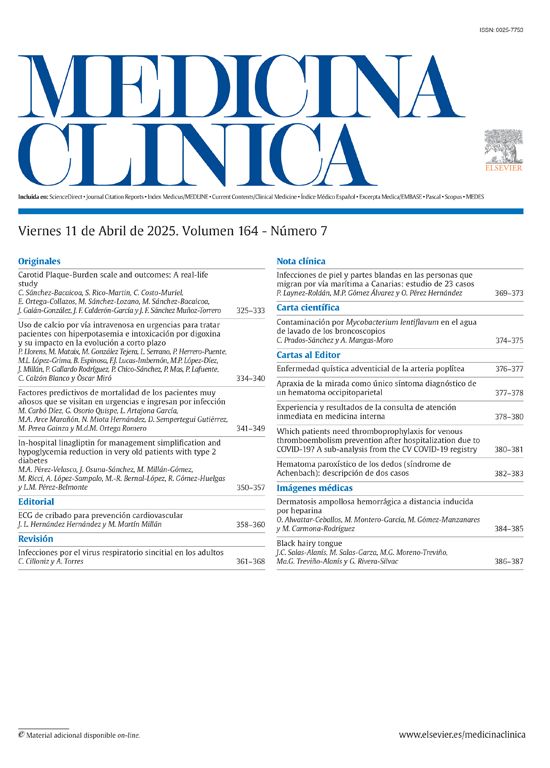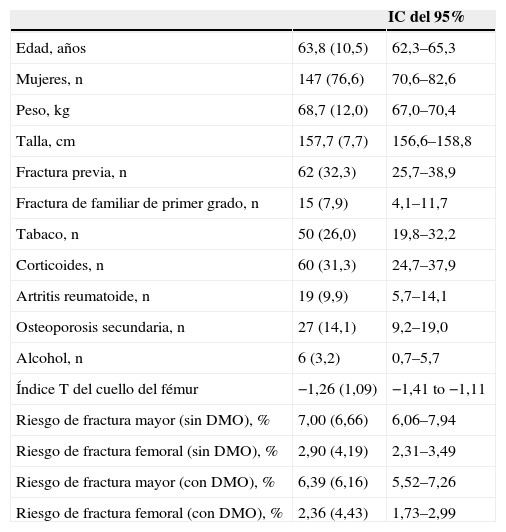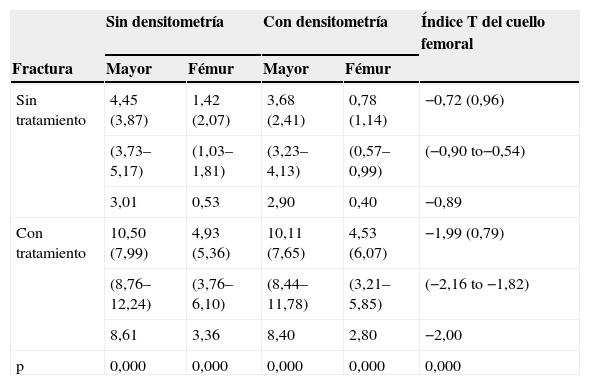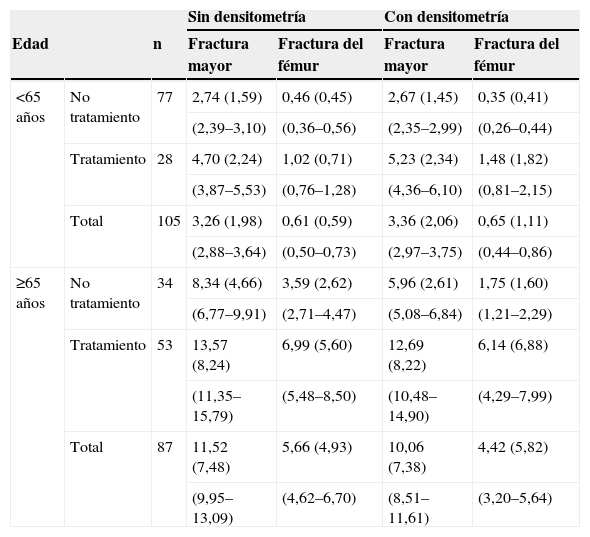Conocer el riesgo de fractura estimado con el aplicativo FRAX® en pacientes tratados y no tratados según la práctica clínica habitual.
Pacientes y métodoDe una base de datos sobre factores de riesgo de osteoporosis y fractura, que incluye determinaciones densitométricas, se seleccionó a todos los pacientes que cumplían los siguientes criterios: 1) edad entre 40 y 90 años; 2) disponer del peso y la talla; 3) tener el primer estudio densitométrico por densitometría ósea de rayos X de doble energía después de septiembre de 2005; 4) conocer la intervención terapéutica realizada después de la densitometría ósea, y 5) no haber realizado tratamiento previo a la primera densitometría. El cálculo del riesgo de fractura se realizó con la aplicación disponible en la web durante el mes de junio de 2008.
ResultadosSe incluyó a 192 personas (45 varones), de las que 81 recibieron tratamiento después de la densitometría. Los pacientes tratados tenían mayor número de factores de riesgo (media [DE] de 1,06 [0,97] e intervalo de confianza [IC] del 95%: 0,88–1,24 frente a 1,49 [1,03] e IC del 95%: 1,27–1,71; p=0,003). El riesgo de fractura fue superior en los pacientes tratados en todos los grupos (fractura mayor y fractura del fémur, con y sin densitometría). En todos los casos, el riesgo de fractura fue mayor cuando no se utilizó el valor densitométrico. En pacientes menores de 65 años, el riesgo de fractura fue significativamente inferior al de los pacientes de más de 64 años en todos los casos.
ConclusionesEl riesgo de fractura calculado mediante el aplicativo FRAX® es superior en los pacientes que recibieron tratamiento, aunque existe un importante solapamiento entre los 2 grupos.
To estimate the fracture risk with the FRAX® in patients treated and not treated in clinical practice.
Material and methodsFrom a database of risk factors for osteoporosis and fracture, that included absorptiometry measurements, we selected all patients who met the following criteria: 1) Age between 40 and 90 years, 2) to have the weight and size, 3) To have the first study by DXA scan after September 2005, 4) To know the therapeutic intervention made after bone densitometry, and 5) Not have done any treatment before the first densitometry. The calculation of the fracture risk was achieved with the application available on the Web during June 2008.
ResultsOne hundred and ninety two people (45 men) were included, 81 of which received treatment after densitometry. Treated patients had more risk factors (1,06±0,97 [IC 95% 0,88–1,24] vs. 1,49±1,03 [IC 95% 1,27–1,71], p=0,003). Fracture risk was higher in treated patients in all groups (major osteoporotic fracture and hip fracture, with and without bone absorptiometry). In all cases, fracture risk was lower when using the densitometric value. In patients younger than 65 years, the fracture risk was significantly lower than in patients over 64 years in all cases.
ConclusionsThe risk of fracture measured by the FRAX® is higher in patients receiving treatment, although there is a significant overlap between the two groups.











